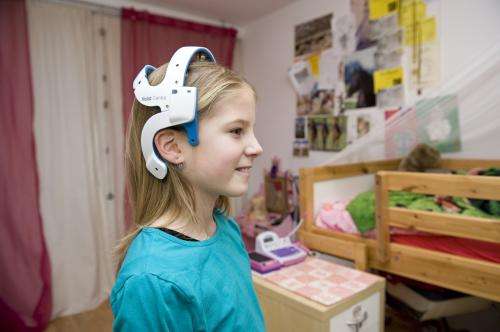Researchers report breakthrough in qualitative and reliable EEG monitoring systems

At next week's Neuroscience 2014, held Nov. 15-19 in Washington, D.C., nanoelectronics research center imec and Holst Centre will present their next-generation wireless electroencephalography (EEG) headset achieving increased EEG data quality. The headset combines dry electrodes with integrated skin-to-electrode impedance monitoring to provide information about the contact quality throughout the entire EEG recording. Unique signal processing is integrated to cancel out motion artefacts. This breakthrough technology paves the way to wireless EEG monitoring solutions for environments without specialized technical assistance, such as at family doctors, psychiatrists, paramedic care, ICU or even at home.
EEG measurements are routinely performed by medical specialists in hospitals, as part of medical diagnosis and treatment of brain disorders, such as epileptic seizures, attention deficit hyperactivity disorder (ADHD) treatment, or in ICU or ER environments after severe head injury. Outside the domain of the medical specialists, EEG monitoring could be extremely relevant in revalidation therapy, sleep training or cognitive enhancement for use at home. However, such applications are not widely adopted today, due to the difficulty of reliable EEG measuring outside controlled environments. Improper mounting of the electrodes and artefacts induced by motion and muscle activity may lead to inaccurate conclusions. In today's clinical practice, the electrical electrode-to-skin impedance is measured before the EEG recording, and electrodes are carefully adjusted until they all have a proper electrical contact to the skin. During recording, patients are instructed to avoid any kind of motion, especially the one that involves head and jaw movements.
Imec and Holst Centre will present a wireless EEG headset that combines EEG monitoring with continuous measuring of the electrical impedance between the skin and the electrodes, providing information on the contact quality throughout the entire EEG recording. Moreover, imec/Holst Centre developed a motion artifact handling approach based on band-pass and adaptive filtering. It substantially reduces the contamination of the EEG recordings due to motion and it can operate in real-time. These promising results are a significant step toward the development of wireless EEG systems with dry electrodes that can be used in daily life.
















